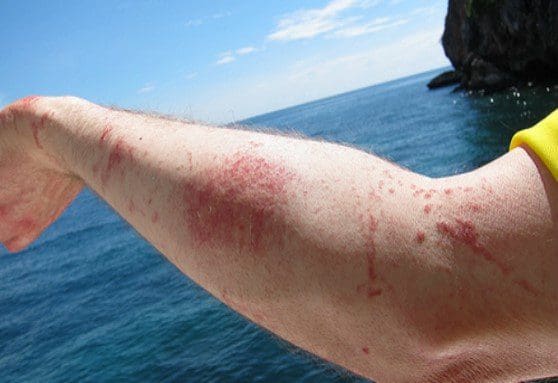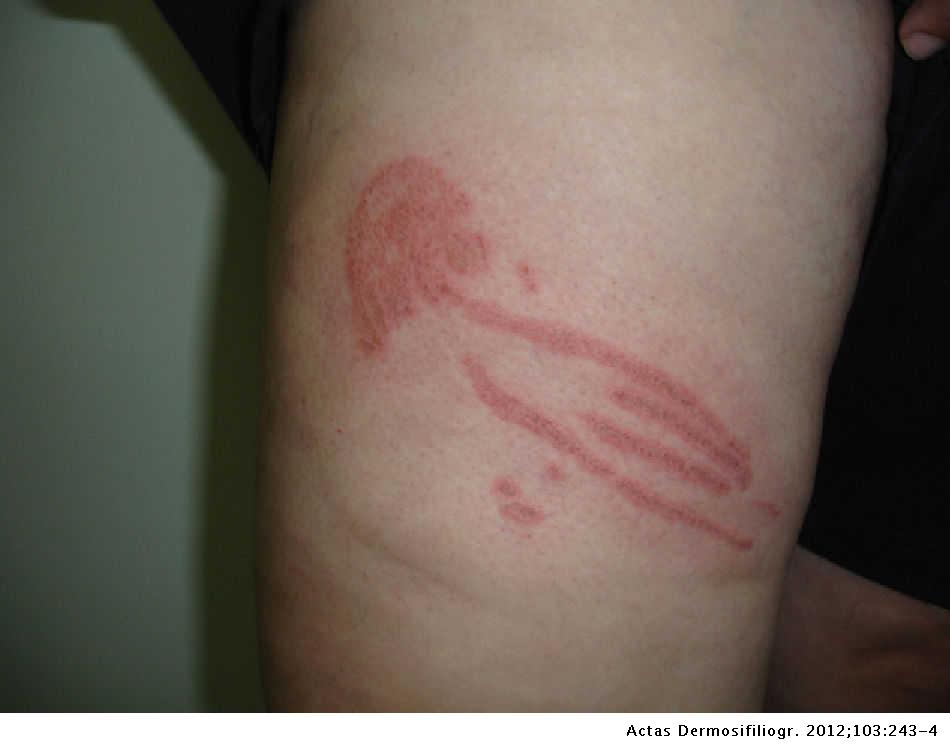Jellyfish stings can be painful and uncomfortable. Apart from the sting itself, the aftermath of a jellyfish sting can be a scar that takes a long time to heal. However, there are some treatments you can use to help reduce the appearance of scars from jellyfish stings. In this article, we will go over some of these treatments.
1. Clean the Wound

Before you start any treatment for a jellyfish sting, you need to clean the wound thoroughly. Use saltwater to rinse the affected area and remove any tentacles or debris that may be stuck on the skin. Avoid using freshwater, as it can cause the jellyfish stingers to release more venom.
2. Apply Vinegar
Vinegar is a common treatment for jellyfish stings. It can help neutralize the venom and prevent it from spreading further. Apply vinegar on the affected area for at least 30 seconds. However, avoid using vinegar on box jellyfish stings as it can worsen the symptoms.
3. Use Hot Water
Hot water is another remedy that can work wonders for jellyfish stings. The heat can inactivate the venom and provide relief from pain and itching. Soak the affected area in hot water for about 20 minutes, or until the pain subsides.
4. Apply Aloe Vera

Aloe vera is known for its soothing and healing properties. It can help reduce inflammation and promote skin healing. Apply aloe vera gel on the affected area and leave it on for at least 30 minutes. Repeat this process two to three times a day until the scar fades away.
5. Use Petroleum Jelly

Petroleum jelly can also help reduce the appearance of scars from jellyfish stings. It provides a protective barrier that prevents the wound from getting infected and helps the skin heal faster. Apply petroleum jelly on the affected area and cover it with a bandage.
6. Apply Tea Tree Oil

Tea tree oil is an essential oil that has antibacterial and anti-inflammatory properties. It can help reduce the appearance of scars and prevent infection. Mix a few drops of tea tree oil with a carrier oil, such as coconut oil, and apply it on the affected area.
7. Apply Vitamin E Oil

Vitamin E oil is known for its skin-healing properties. It can help reduce the appearance of scars and promote skin regeneration. Apply vitamin E oil on the affected area and massage it gently until it's absorbed into the skin. Repeat this process two to three times a day.
8. Use Scar Creams

There are many over-the-counter scar creams that can help reduce the appearance of scars from jellyfish stings. These creams contain ingredients such as silicone, onion extract, and vitamin E that help promote skin healing and reduce inflammation. Apply the cream on the affected area as directed on the packaging.
9. Consider Laser Treatment

If the scar from a jellyfish sting is severe, you may want to consider laser treatment. Laser treatment can help reduce the appearance of scars by removing the damaged skin and promoting skin regeneration. However, laser treatment is expensive and may require multiple sessions.
10. Consult a Dermatologist

If you're unsure about the best treatment for your jellyfish sting scar, it's best to consult a dermatologist. A dermatologist can assess the severity of the scar and recommend the best treatment options for you.
Conclusion
Jellyfish sting scars can be unsightly and uncomfortable. However, there are many treatments you can use to help reduce the appearance of scars and promote skin healing. From vinegar and hot water to aloe vera and scar creams, there are many options to choose from. If you're unsure about the best treatment for your jellyfish sting scar, it's best to consult a dermatologist.